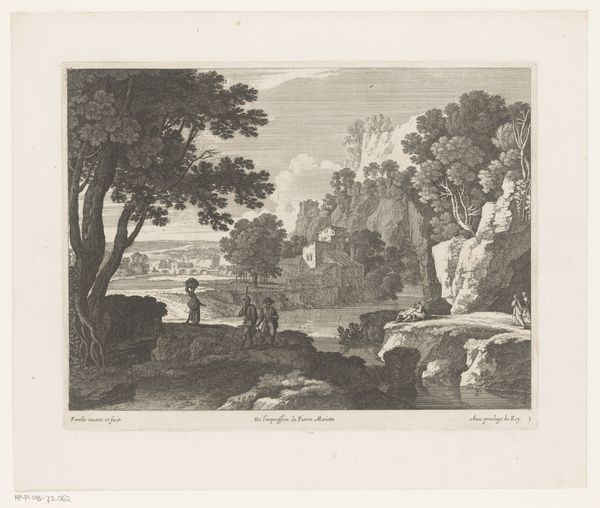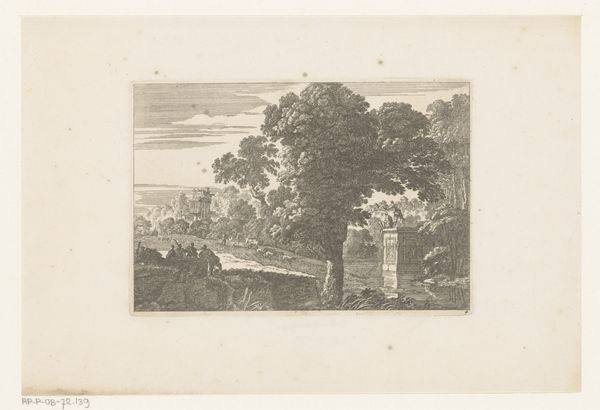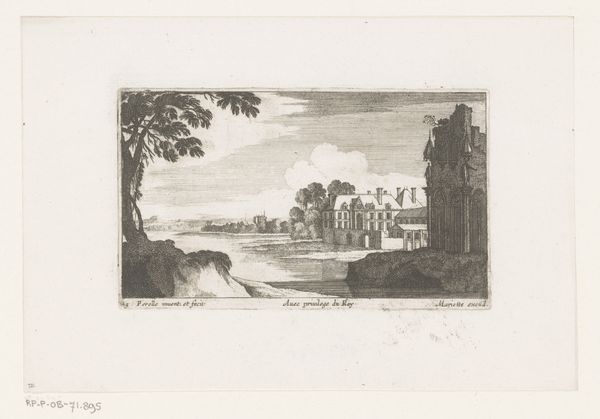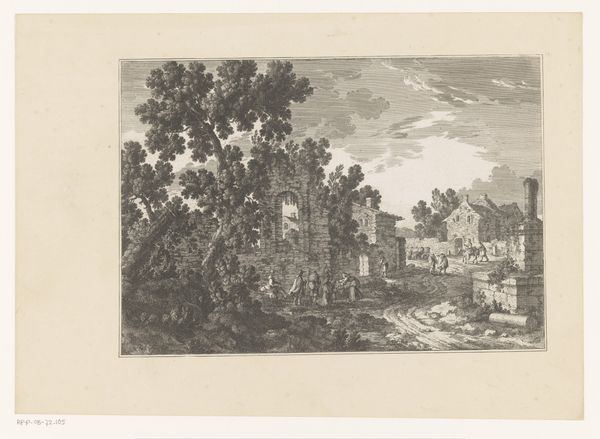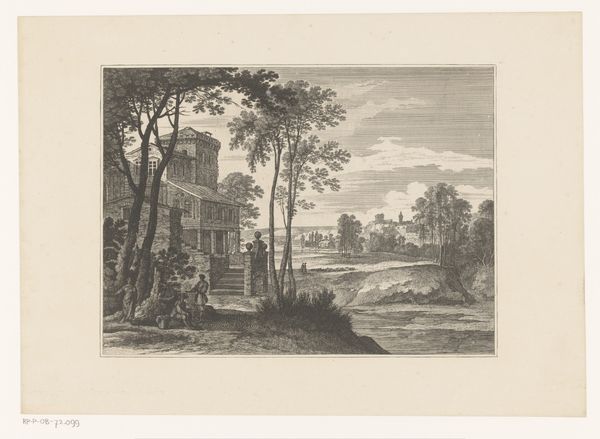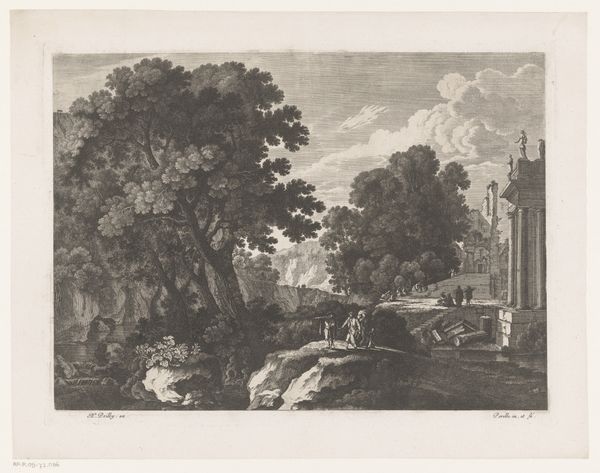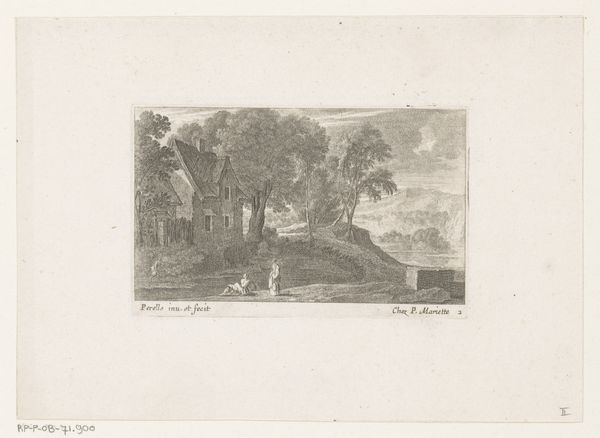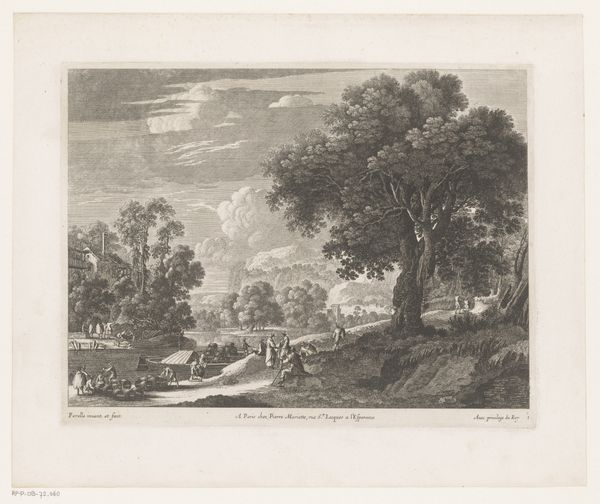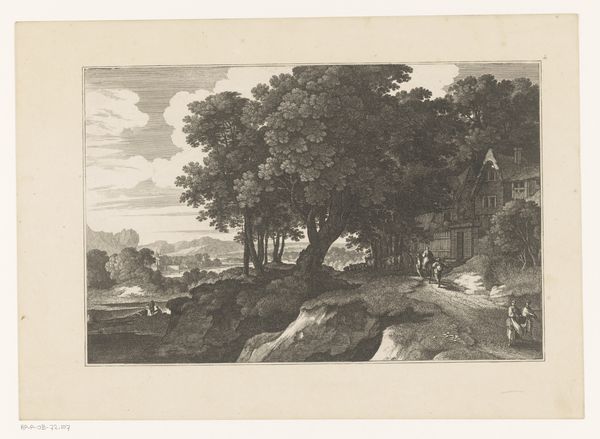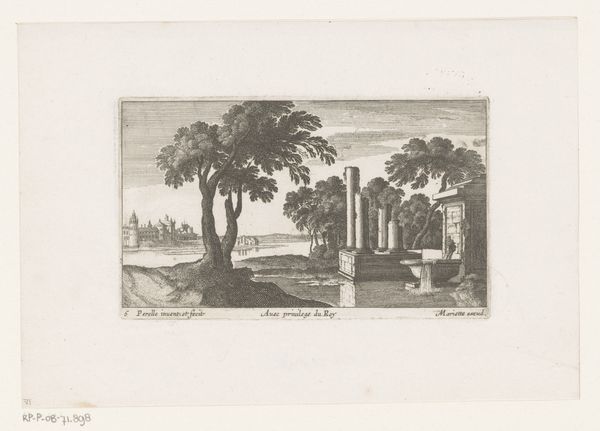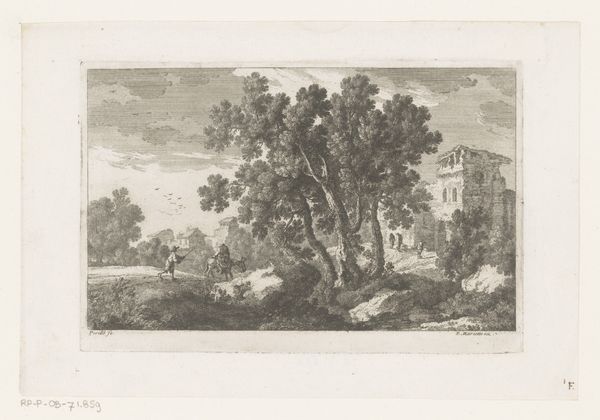
etching
#
medieval
#
etching
#
landscape
#
line
#
cityscape
#
genre-painting
Dimensions: height 231 mm, width 312 mm
Copyright: Rijks Museum: Open Domain
Curator: This is "View of the Edge of a Village with a Cathedral," an etching, likely made sometime between 1613 and 1695 by Nicolas Perelle. It resides here at the Rijksmuseum. Editor: It has a kind of placid grandeur to it. The looming cathedral is balanced by this leafy foreground with figures walking about, almost as though oblivious to its power. It feels incredibly Dutch, or maybe Flemish. Curator: Interesting. Considering it is an etching, let’s consider Perelle's technical choices. He clearly prioritized line work, relying on varied strokes to denote shadow, texture, and form. It’s almost scientific in its meticulousness. Editor: It is the contrast that holds my attention, the ordinary figures juxtaposed against such a large religious building; I mean, how did this image function for those people depicted in it, what were their beliefs and what hierarchies ruled them? How does a monument like the cathedral in the background dictate daily interactions? Curator: Well, let’s examine the intended market and the physical object, an etching produced during a time when printmaking served crucial functions – from decoration and commemorative display to communication and commerce. These prints helped transmit cultural values and norms in rapidly shifting communities. Editor: It also prompts consideration of who had access to this image, both in terms of physical possession of the etching and the understanding of the values that you mentioned, which were transmitted and reflected across certain parts of the populace. Was this artwork consumed or circulated to only an elite few, and to what ends? Curator: That tension you noticed then, is maybe less accidental and more consciously deployed to emphasize this societal power dynamic and the production means associated. These etchings played a part in maintaining this relationship via their material function as cultural commodities and art pieces. Editor: It also makes me question who precisely is left out of this idyllic depiction – the ones performing the work that affords the pictured elite their ability to stroll peacefully. The piece, in that regard, becomes a fascinating social document of not only a cathedral at the edge of a village, but also how these components are framed or viewed. Curator: Thank you, that's an interesting approach and certainly illuminates elements I had not noticed on first view! Editor: Agreed, and the etching makes me wonder about the untold stories and people surrounding the materials utilized by Nicolas Perelle. Thank you!
Comments
No comments
Be the first to comment and join the conversation on the ultimate creative platform.

